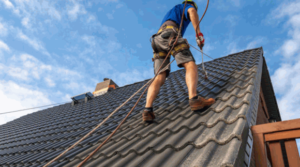Blocked drains can be a major headache for homeowners, causing inconvenience and potential damage if not addressed promptly.
We will discuss the common causes of blocked drains, how to identify if your drains are blocked, the risks associated with blockages, and practical tips on prevention.
Learn about DIY methods to unclog drains and know when to call in a professional for assistance with dealing with blocked drains.
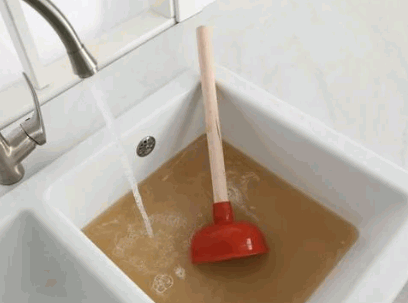
What Causes Blocked Drains?
Blocked drains can occur due to various reasons such as hair and soap build-up, food waste, tree roots, and foreign objects obstructing the flow of water through the pipes.
When hair and soap build-up accumulates in the pipes, it forms thick clogs that restrict the water flow, leading to slow drainage or complete blockages. This common occurrence in bathroom drains can result in unpleasant odors and water backup in sinks and showers.
Food waste is another culprit behind blocked drains, especially in kitchen sinks. Grease, oil, and food particles can solidify within the pipes, creating blockages that can be challenging to clear. This not only causes water to drain slowly but can also attract pests and cause hygienic issues.
The invasion of tree roots into underground pipes is a more serious cause of blocked drains. As roots grow, they can crack and infiltrate the pipes, causing severe blockages and damaging the overall drainage system. This scenario often requires professional intervention to repair the pipes and prevent future root intrusions.
Foreign objects like sanitary products, kitchen rolls, or children’s toys mistakenly flushed down toilets can block the sewer lines, leading to backups and potential sewage leaks. These obstructions can cause extensive damage to the plumbing system and require immediate attention to prevent further complications.
Hair And Soap Buildup
One of the common reasons for blocked drains is the buildup of hair and soap residues that accumulate over time, restricting the smooth flow of water through the pipes.
When we have a shower or wash our hair, small strands of hair can easily get washed down the drain along with the soapy water. Over time, these hair strands intertwine and mix with soap scum, forming a sticky residue that clings to the walls of the pipes.
This accumulation gradually narrows the diameter of the pipes, reducing the space available for water to pass through. The more hair and soap residues build up, the higher the chances of a blocked drain.
To prevent such blockages, it’s advisable to use drain covers or hair catchers that can trap hair before it goes down the drain. Regularly cleaning these covers and removing accumulated debris can significantly reduce the risk of blockages and keep your drains flowing smoothly.
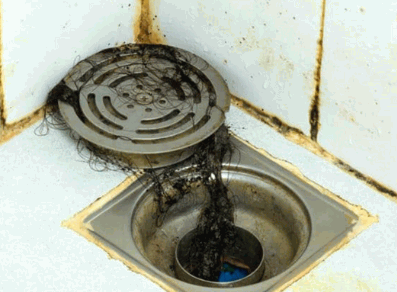
Food Waste
Food waste disposed of in sinks or drains can contribute to blockages as solid particles accumulate and create blockages within the drainage system.
Some common types of food waste that are notorious for causing drain blockages include coffee grounds, eggshells, pasta, rice, and fibrous vegetables like celery. When these items go down the drain, they can accumulate over time, forming a thick sludge that hinders proper water flow. To prevent these blockages, it is crucial to dispose of food waste properly.
One crucial rule to follow is to avoid pouring grease or oils down the drain. Instead, collect them in a separate container and dispose of them in the bin.
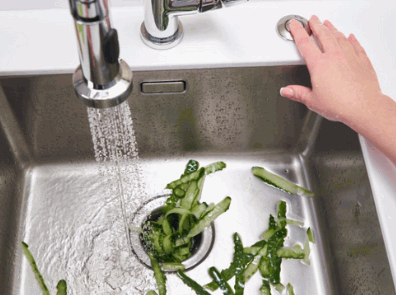
Tree Roots
Tree roots invading underground pipes can cause blockages by penetrating the pipe walls and creating obstructions that hinder the flow of wastewater.
As trees grow, their roots naturally seek out sources of water to sustain the tree’s health and growth. In their search for moisture, tree roots can infiltrate sewer pipes through small cracks or joints, attracted by the warmth and condensation inside the pipes. Once inside, the roots continue to grow, gradually expanding and filling the pipe space.
This intrusion not only impedes the proper flow of wastewater but also leads to costly and inconvenient blockages within the drainage system. Some common signs of tree root intrusion include slow drainage, gurgling noises coming from drains, recurring clogs, foul odours emanating from drains, and even sinkholes forming in the yard.
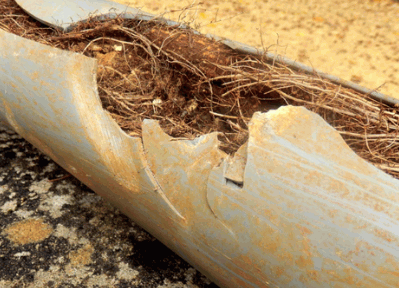
Foreign Objects
Foreign objects such as sanitary products, wipes, or toys that are flushed down the toilet or washed down the sink can cause blockages in the pipes, leading to drainage issues.
Other common foreign objects that may lead to drain blockages include cooking grease, hair, dental floss, and cotton buds.
It is crucial for individuals to be mindful of what they dispose of in their drains to prevent such issues. For instance, instead of pouring cooking oil down the sink, it should be cooled and then disposed of in the solid waste bin.
Educating homeowners on the proper disposal methods for various items can significantly reduce the likelihood of drain blockages. For instance, placing a mesh screen over the shower drain can effectively catch hair and prevent it from going down the pipes.
How To Tell If Your Drains Are Blocked?
Identifying blocked drains is crucial to prevent potential damage to your property. Signs include slow-draining water, unpleasant odours, and gurgling noises coming from the drains.
When you notice slow-draining water in your sinks, tubs, or toilets, it is often a telltale sign of a blockage developing in your pipes. Ignoring this can lead to a complete obstruction, potentially causing flooding and water damage in your home.
Unpleasant odours emanating from your drains indicate a buildup of organic matter or sewage, which not only poses health risks but can also signal more serious underlying issues within your plumbing system.
Gurgling noises coming from the drains may be due to trapped air trying to escape through the blockage. This can indicate a partial or complete obstruction, and if left unattended, could result in burst pipes or sewage backup.
Slow Draining Water
One of the indications of a blocked drain is slow draining water in sinks, showers, or toilets, signalling a potential blockage that needs attention.
Slow drainage can be caused by various factors, including hair build-up, soap scum, food particles, or even tree roots infiltrating the pipes. These partial blockages hinder the smooth flow of water, leading to sluggish draining. If left unaddressed, these issues can escalate into more severe problems, such as complete blockages or even pipe damage.
It is crucial to act promptly upon noticing slow drainage to prevent further complications. Simple DIY methods like using a plunger or a drain snake can often clear minor blockages. For persistent or complex issues, seeking professional assistance from a plumber is recommended to ensure the problem is fully resolved.
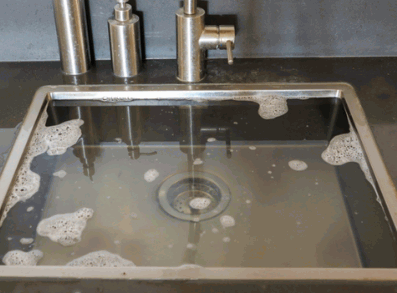
Unpleasant Odours
Unpleasant odours emanating from drains or toilets can be a clear indicator of blockages in the sewage system or pipes, requiring immediate investigation.
These foul smells are typically caused by the buildup of decomposing organic matter such as food particles, hair, or grease in the drains, leading to the release of unpleasant odours. Stagnant water in pipes can also contribute to the production of sewer odours. It’s essential to address these underlying issues promptly to prevent further contamination and potential health hazards.
- To combat sewer odours effectively, natural deodorisers like baking soda, vinegar, or citrus peels can be used to help neutralise the smells.
- In cases of severe blockages or persistent odours, seeking professional cleaning services from a plumber or drain specialist may be necessary to thoroughly clean the pipelines.
Gurgling Noises
Gurgling noises coming from drains or toilets when water is running indicate air trapped in the pipes due to blockages, disrupting the normal flow of wastewater.
These noises are not just annoying; they can serve as an important early warning sign of potential drainage issues that could lead to more severe problems if left unattended.
When you hear gurgling, it’s crucial to investigate the source promptly. One common cause could be a blockage in the drainage system, which often originates in the pipes or the sewer line. To pinpoint the exact location of the blockage, start by checking multiple drains throughout your home, such as sinks, showers, and toilets.
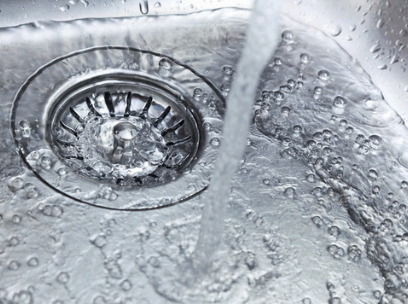
What Are The Risks Of Blocked Drains?
Blocked drains pose significant risks, including water damage to property and health hazards due to exposure to contaminated water and sewage.
Property damage caused by blocked drains can lead to costly repairs and restoration work. In severe cases, flooding from blocked drains can ruin carpets, furniture, and even structural foundations.
Mould growth is another concern stemming from stagnant water within blocked drains. The damp environment created by blockages provides an ideal breeding ground for mould, which can quickly spread throughout a property, leading to respiratory issues and other health problems.
The spread of diseases is a significant risk associated with unsanitary conditions resulting from blocked drains. Bacteria and viruses present in sewage can contaminate water sources, posing health risks to residents and pets.
Water Damage
One of the primary risks of blocked drains is water damage, which can lead to structural issues, dampness, and mould growth within the property.
When drains are blocked for an extended period, water starts backing up and finding its way into places it shouldn’t be. This excess moisture can seep into walls, floors, and ceilings, causing damage that goes unnoticed until it’s too late.
Untreated water damage can compromise the integrity of the building’s structure, weakening foundations and support beams. The accumulation of moisture also creates the perfect environment for mould to thrive, posing serious health risks to occupants.
From an insurance perspective, prolonged water damage resulting from blocked drains may not be covered if it is deemed a maintenance issue. This can leave property owners facing hefty repair bills and potential health hazards. That’s why it’s crucial to address blockages promptly to avoid costly consequences down the line.
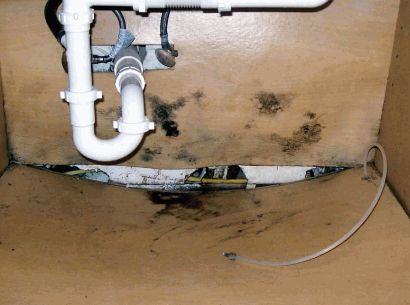
Health Hazards
Blocked drains can create health hazards as stagnant water and sewage backup promote bacterial growth, posing risks of infections and diseases to residents.
When drains are blocked, the accumulation of water becomes a breeding ground for harmful bacteria such as E. coli and Salmonella, leading to conditions like gastroenteritis. The standing water can result in skin infections upon contact, causing irritation and potential complications.
In addition, the damp environment produced by blocked drains can contribute to respiratory issues due to mould growth and airborne contaminants. To prevent these health risks, it is crucial to promptly address drain blockages by seeking professional help and adopting strict hygiene standards to minimise exposure to contaminants.
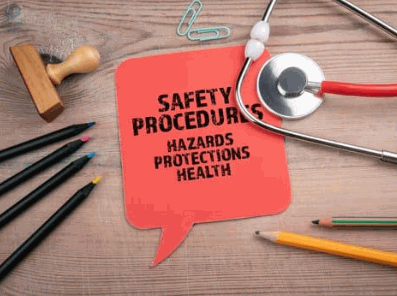
How To Prevent Blocked Drains?
Preventing blocked drains requires regular maintenance, following proper waste disposal practices, and using drain covers to prevent debris from entering the pipes.
One of the key preventive measures to avoid drain blockages is conducting periodic inspections to catch any potential issues early on. By checking for signs of slow drainage, foul odours, or strange noises coming from the pipes, homeowners can address minor problems before they escalate into major blockages.
Additionally, grease trap maintenance is crucial in preventing clogs caused by the build-up of fats, oils, and grease in the pipes. Regularly cleaning or emptying grease traps can help maintain proper flow and prevent blockages.
It is also important to educate residents on responsible waste disposal practices. Discouraging the flushing of non-biodegradable items like wet wipes, sanitary products, or cooking oils down the drain can significantly reduce the risk of blockages.
For minor clogs, homeowners can utilise DIY methods such as using a plunger or a drain snake to clear obstructions. Avoid harsh chemical cleaners as they can damage the pipes and harm the environment.
Discover: What’s The Best Drain Cleaner For Bathroom Sinks
Regular Maintenance
Regular maintenance of drainage systems is essential to prevent blockages, involving inspections, cleaning, and minor repairs to ensure smooth wastewater flow.
Checking for leaks is a crucial part of routine drain maintenance, as even a small leak can lead to significant water damage over time. Clearing debris from drains helps prevent buildup that can eventually cause blockages. Flushing drains with hot water can help dissolve soap scum and grease, keeping the pipes clean. Using natural cleaners like vinegar and bicarbonate of soda not only clears the drains but also reduces the environmental impact of harsh chemicals. Proactive upkeep of drainage systems not only saves you money on potential repairs but also ensures your home remains free from foul odours and blockages.
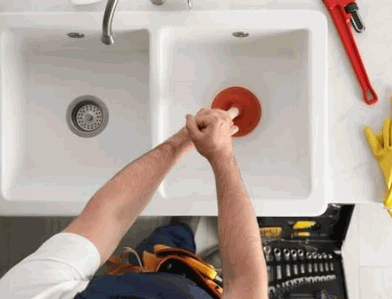
Proper Disposal Of Waste
Proper waste disposal practices, such as avoiding pouring grease, oil, or non-biodegradable items down the plug hole, can significantly reduce the risk of blockages in the sewage system.
Additionally, composting food waste instead of tossing it in the regular bin can enrich the soil and divert organic materials from rubbish dumps. Using sink strainers is another simple yet effective way to prevent food scraps and debris from blocking pipes. It is crucial to emphasize the environmental impact of improper waste disposal, as it can lead to pollution of water bodies, soil contamination, and harm to wildlife. Individuals should also be mindful of not flushing inappropriate items like wet wipes or medicines that can harm aquatic ecosystems.
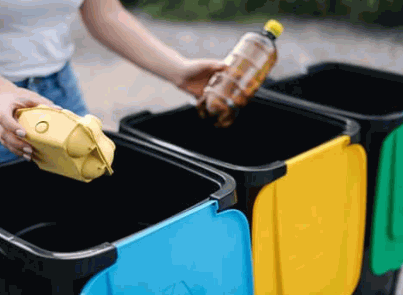
Use Of Drain Covers
Installing drain covers in sinks, showers, and floor drains can prevent debris, hair, and foreign objects from entering the pipes and causing blockages.
These covers act as a barrier, allowing water to flow freely while trapping larger particles. By keeping unwanted items out of your plumbing system, you reduce the risk of blockages and potential water damage.
It is essential to choose the right type of drain cover for each opening – mesh or perforated covers are ideal for sinks and showers, while larger metal or plastic covers work well for floor drains.
Regular cleaning and maintenance of these covers are simple tasks that can significantly prolong the lifespan of your plumbing system, ensuring smooth drainage for years to come.
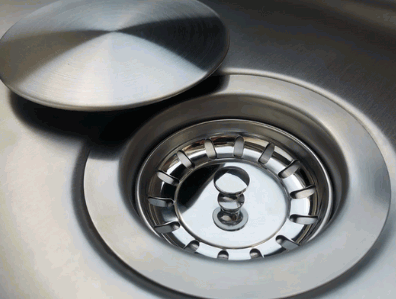
What Are The DIY Methods To Unclog Blocked Drains?
Homeowners can employ several DIY methods to unblock blocked drains, including using boiling water, bicarbonate of soda and vinegar mixtures, plungers, and drain rods.
Regarding using boiling water, start by heating a kettle or pot of water until it reaches boiling point. Carefully pour the hot water down the drain in a slow and steady stream to dissolve blockages, particularly for organic matter build-up like grease or soap scum.
For bicarbonate of soda and vinegar mixtures, begin by pouring half a cup of bicarbonate of soda down the drain followed by a mixture of one cup of vinegar and hot water. Allow it to sit for at least 30 minutes before flushing with more hot water to clear the blockage.
A plunger is a versatile tool that can be used for both sink and toilet drains. Ensure a tight seal around the drain opening and apply firm pressure with a quick up-and-down motion. This method is effective for moderate blockages caused by items like hair or small objects.
When using a drain rod, insert it into the drain and gently rotate it to break up clogs. Pull out any debris that the rod grabs onto. This method is suitable for more stubborn blockages caused by solid materials or older build-ups in the pipe.
It’s crucial to know the limits of these DIY methods and when it’s time to seek professional help. If repeated attempts fail to clear the drain, there may be a more severe underlying issue that requires the expertise of a professional plumber. If there are unusual odours, slow drainage in multiple fixtures, or gurgling sounds, it’s recommended to call a professional for a thorough inspection and resolution.
Boiling Water
Boiling water can be an effective DIY method to clear minor blockages in drains caused by grease or soap residues, as the hot water helps dissolve the build-up.
It’s a simple and eco-friendly solution that doesn’t involve harsh chemicals. The process itself is quite straightforward – just bring water to a vigorous boil and carefully pour it down the affected drain. The optimal water temperature for this method is around 100°C (212°F) to ensure maximum effectiveness in breaking down the blockage. Caution must be taken when handling boiling water to avoid burns or scalding. It’s important to pour the water slowly to prevent splashing, and never use this method in PVC pipes as the high temperature can damage them.
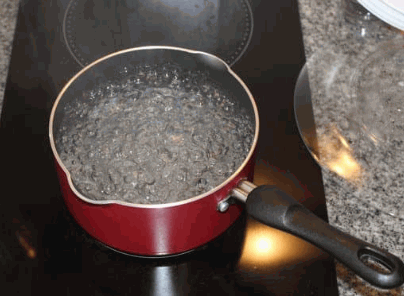
Baking Soda And Vinegar
A mixture of bicarbonate of soda and vinegar can create a natural cleaning solution that helps break down organic matter and loosen minor blockages in drains.
When combined, bicarbonate of soda and vinegar undergo a chemical reaction that produces carbon dioxide gas. This fizzing action helps to dislodge debris, grease, and grime accumulated in the pipes. To utilise this method effectively, start by pouring hot water down the drain to prime it for the mixture. Next, pour half a cup of bicarbonate of soda followed by a mixture of one cup of vinegar and one cup of hot water. Let it sit for about 15-30 minutes before rinsing with hot water.
If the blockage persists, don’t hesitate to repeat the process. Remember, patience is key when dealing with stubborn drain blockages. By following these simple steps and being proactive with maintenance, you can keep your drains running smoothly and avoid costly repairs.
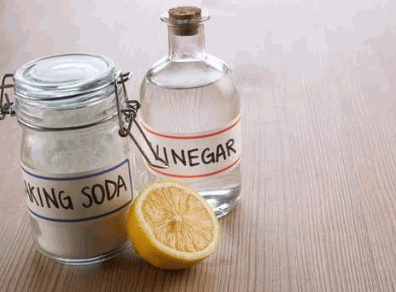
Plunger
Using a plunger is a common DIY method for dislodging blockages in sinks, toilets, or showers by creating pressure to push or pull the blockage out of the drain.
There are different types of plungers suitable for various drain types. For sinks and flat surfaces, a flat-bottomed plunger with a straight handle works best, while toilets require a flange or accordion-style plunger to create a proper seal. Showers and baths may benefit from a bellows plunger with a narrow mouth.
When using a plunger, ensure a tight seal around the drain opening. Push and pull the plunger with a good amount of force, maintaining the seal to create pressure that dislodges the blockage. Plungers work by forcing air or water through the drain, either pushing the blockage forward or pulling it backward, effectively clearing the blockage.
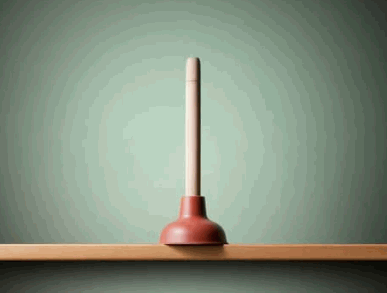
Drain Snake
A drain snake, also known as a plumber’s auger, can be used to reach deeper blockages in drains and pipes, breaking up blockages and allowing water to flow smoothly.
When faced with a persistent blockage that a plunger cannot remove, a drain snake becomes a valuable tool in a household. The process involves inserting the snake into the drain until it reaches the blockage, then using a twisting motion to break it up. Careful handling is essential to avoid causing damage to the pipes. It is important to be cautious when using a drain snake as improper use can result in scratching or puncturing the pipes, leading to leaks and further damage.
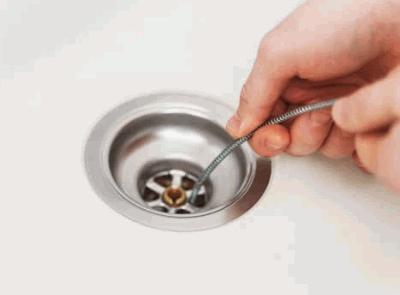
When To Call A Professional For Blocked Drains?
Certain situations warrant calling a professional to address blocked drains, such as multiple blockages, recurring issues, foul odours, and ineffective DIY clearing methods.
When faced with persistent drainage problems despite repeated attempts to clear the blockage, it is vital to seek the expertise of a professional drain service. Blockages that are deep within the plumbing system or involve complex pipe layouts can be challenging to resolve without the proper equipment and knowledge.
Safety concerns may arise when dealing with blocked drains, especially if there is a risk of contamination or exposure to harmful substances. Professionals are trained to handle such situations with the necessary precautions to ensure the safety of both the property and its occupants.
If foul odours persist even after attempting home remedies, it could indicate a more severe underlying issue that requires a thorough inspection and specialised treatment. Contacting a reliable drainage service can help identify the root cause and address it effectively.
Multiple Blocked Drains
Experiencing blockages in multiple drains simultaneously may indicate a more significant underlying issue in the main sewer line or drainage system, necessitating professional inspection and repair.
This could be a sign of a more serious problem lurking within the plumbing system. It might suggest issues such as tree roots infiltrating the pipes or structural damage to the sewer line. These blockages may not just be isolated incidents but could point to a systemic issue affecting the entire drainage network.
Attempting to tackle these issues without proper expertise could lead to further complications and expensive repairs down the line. Professional plumbers have the tools and knowledge to accurately diagnose the root cause of the blockages and implement the necessary solutions.
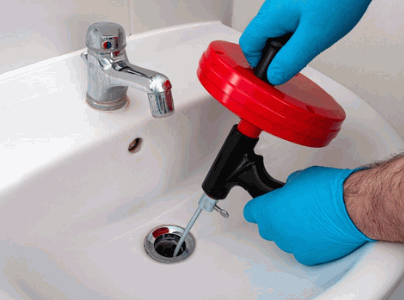
Recurring Blockages
Frequent or recurring blockages in the same drain despite DIY attempts signal persistent issues that require the expertise of a professional plumber to identify and address the root cause.
These persistent blockages may indicate deeper problems within the drainage system that go beyond surface-level fixes. Structural issues such as pipe damage or improper installation can lead to recurring blockages. Inadequate cleaning practices like using harsh chemicals can worsen the situation by causing corrosion or build-up over time.
Opting for a professional evaluation not only ensures accurate diagnosis but also paves the way for long-term solutions that address the underlying issues. Temporary fixes may offer a quick resolution, but they often fail to prevent future blockages or more significant damage, costing more in the long run.
Foul Odours
Persistent foul odours emanating from drains or toilets indicate a severe blockage or sewer backup issue that requires immediate attention from a professional drainage specialist.
These unpleasant smells are often a sign of underlying problems, including sewage build-up within the plumbing system or pipe damage leading to leaks. Ignoring these odours can pose serious health risks to occupants, as they may contain harmful gases like hydrogen sulphide that can cause respiratory issues or worsen existing medical conditions. It is crucial to address sewer odours promptly to prevent potential contamination and ensure a safe living environment. Contacting professionals trained to handle hazardous waste will guarantee a thorough inspection and effective solution to eliminating the source of the odour efficiently.
Ineffective DIY Methods
If DIY attempts to clear blockages using home remedies or tools prove ineffective or worsen the situation, it is advisable to seek the expertise of a licensed plumber to prevent further damage.
Utilising unproven techniques or harsh chemicals without proper knowledge can lead to the blockage becoming more stubborn and difficult to resolve. Incorrect methods may damage the pipes or sewage system, resulting in costly repairs and potential health hazards from contaminated water.
Professional drainage specialists possess the necessary equipment and experience to accurately diagnose the issue and provide targeted solutions, ensuring the efficient and lasting resolution of even complex blockages. Reputable drainage companies offer services such as high-pressure jetting, drain camera inspections, and environmentally friendly drain cleaning methods to address blockages effectively.


